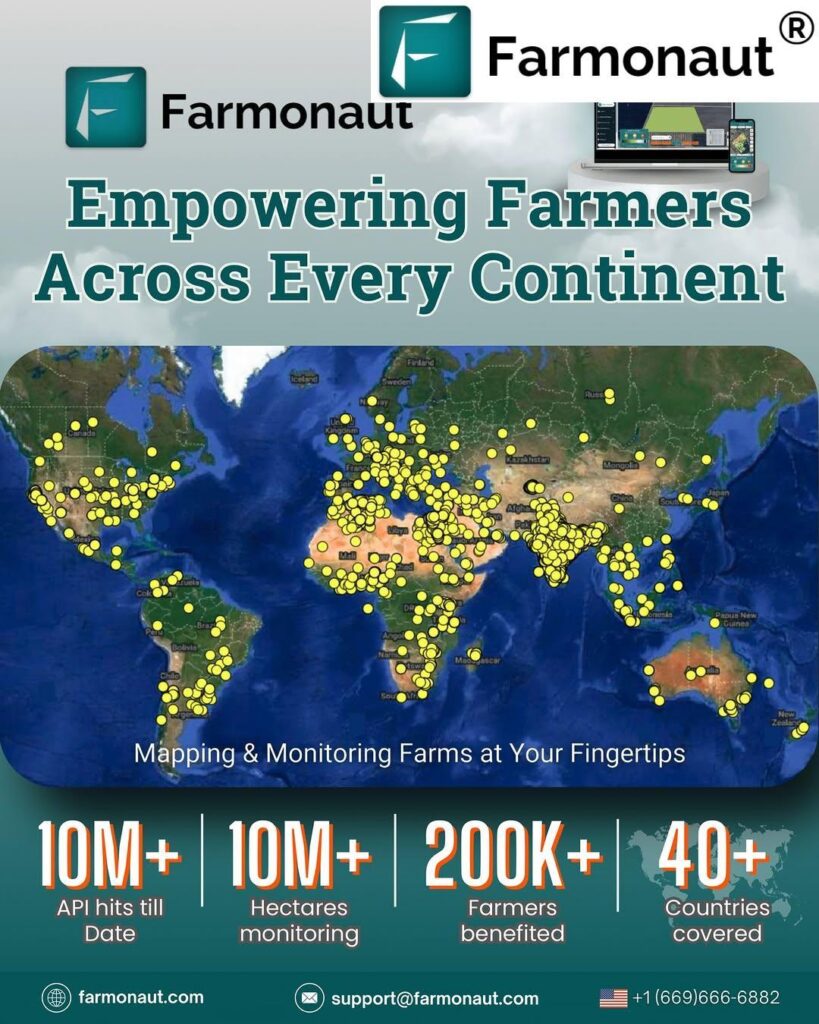Scottish Forestry Regulations: Balancing Woodland Creation with Environmental Impact in the Borders
“Scottish Forestry faces criticism for a 400-hectare woodland project in the Borders, raising concerns about environmental impact assessments.”
In recent years, the Scottish forestry sector has been at the center of a growing debate surrounding the balance between ambitious woodland creation goals and the protection of local environments and communities. As we delve into this complex issue, we’ll explore the challenges faced by regulatory bodies, community councils, and environmental organizations in ensuring sustainable forestry practices across Scotland, with a particular focus on the Scottish Borders region.
The Current Landscape of Scottish Forestry Regulations
Scottish forestry regulations are designed to promote sustainable woodland creation while safeguarding the environment. However, recent developments have brought these regulations under scrutiny, particularly concerning the transparency and effectiveness of Environmental Impact Assessments (EIAs) for large-scale planting schemes.
The controversy centers around a 400-hectare woodland creation project in the Scottish Borders, which has sparked concern among local community councils and environmental rights groups. This case highlights the broader issues facing the Scottish forestry sector as it strives to meet ambitious tree-planting targets while addressing the needs of local ecosystems and communities.
The Role of Environmental Impact Assessments
Environmental Impact Assessments are crucial tools in evaluating the potential effects of woodland creation schemes on local ecosystems, landscapes, and communities. These assessments are meant to ensure that new plantings are carried out responsibly, with due consideration for biodiversity, soil health, and the visual impact on the surrounding area.
However, recent findings have raised questions about the effectiveness of the current EIA process. The Environmental Rights Centre for Scotland (ERCS) has revealed that between 2019 and 2023, Scottish Forestry received 305 applications for tree plantations covering tens of thousands of hectares, yet only required an EIA for one project. This statistic has led to concerns about the rigor of the screening process and the potential for significant environmental impacts to go unaddressed.

Community Concerns and Transparency Issues
The Lilliesleaf, Ashkirk and Midlem Community Council (LAMCC) has been at the forefront of voicing local concerns about the 400-hectare project near Melrose. Their primary issues include:
- The lack of proper ecological and landscape impact assessments
- The dominance of non-native Sitka spruce in the planting plans
- The potential loss of valuable habitats and protected species
- The cumulative impact of multiple woodland schemes in the region
These concerns are compounded by what many perceive as a lack of transparency in the decision-making process. The ERCS has criticized Scottish Forestry for not publishing screening opinions online, making it difficult for communities to engage effectively in the consultation process and challenge decisions within the legal timeframe.
The Balancing Act: Commercial Forestry vs. Biodiversity Conservation
At the heart of this debate lies the challenge of balancing commercial forestry interests with the need for biodiversity conservation and landscape preservation. The woodland creation scheme at Todrig Farm, owned by Gresham House Forest Growth and Sustainability Partnership, exemplifies this dilemma.
While the project promises to maintain 40% of the total area as open ground for biodiversity, concerns have been raised about the composition of the planted areas. According to plans, 85% of the planting will be commercial conifer, with 72% being Sitka spruce. This fast-growing, non-native species is popular for timber production but has been criticized for its impact on biodiversity and local ecosystems.
The Case for Diverse Native Woodlands
Environmental groups and community councils are advocating for a more balanced approach to woodland creation, emphasizing the importance of native tree species. Native woodlands offer numerous benefits, including:
- Enhanced biodiversity support
- Improved landscape aesthetics
- Better resilience to climate change and pests
- Positive impacts on mental health and well-being
The LAMCC spokesperson emphasized the need for “a proper balance with a range of native trees,” arguing that well-planned native woodlands can benefit biodiversity, the landscape, and local communities alike.
The Role of Investment and Public Bodies
The involvement of public bodies and investment firms in woodland creation schemes adds another layer of complexity to the issue. The Scottish National Investment Bank (SNIB), a publicly owned entity, has committed £50 million to the Gresham House Forest Growth and Sustainability fund, which focuses on woodland creation and carbon sequestration.
“The Scottish National Investment Bank plays a crucial role in funding sustainable forestry projects, balancing commercial interests with biodiversity conservation.”
While such investments aim to support Scotland’s net-zero ambitions and provide environmental benefits, they also raise questions about the potential conflict between commercial interests and ecological considerations. The challenge lies in ensuring that these investments truly support sustainable and diverse woodland creation rather than prioritizing short-term commercial gains.
Improving Transparency and Community Engagement
To address the concerns raised by community councils and environmental groups, there is a pressing need for improved transparency and community engagement in the forestry planning process. Some suggested improvements include:
- Publishing screening opinions and EIA documents online in a timely manner
- Extending consultation periods to allow for more thorough community input
- Providing clearer guidance on the EIA process and decision-making criteria
- Ensuring that ecological surveys cover a full 12-month period to account for seasonal variations
The Environmental Rights Centre for Scotland has been pushing for these changes, and there has been some progress. Scottish Forestry has agreed to publish all EIA documents online by 2026, although critics argue that this timeline is too slow given the urgency of the issues at hand.
The Way Forward: Balancing Interests for Sustainable Forestry
As Scotland aims to increase its woodland cover to combat climate change and enhance biodiversity, it’s clear that a more balanced and transparent approach to forestry regulations is needed. This approach should consider:
- Stricter criteria for Environmental Impact Assessments
- Greater emphasis on native species in woodland creation schemes
- Enhanced community consultation and engagement processes
- Integration of long-term ecological monitoring into forestry projects
By addressing these aspects, Scottish forestry regulations can better serve both environmental and economic interests, ensuring that woodland creation contributes positively to Scotland’s landscapes and ecosystems.

The Role of Technology in Sustainable Forestry
As we navigate the complexities of balancing woodland creation with environmental preservation, technology emerges as a crucial tool. Advanced monitoring and management systems can play a significant role in ensuring sustainable forestry practices. For instance, carbon footprinting solutions can help forestry projects accurately measure and report their environmental impact, aligning with Scotland’s net-zero ambitions.
Additionally, satellite-based monitoring systems can provide valuable insights into forest health, growth patterns, and biodiversity indicators. These technologies enable more precise and timely assessments of woodland creation projects, potentially enhancing the effectiveness of Environmental Impact Assessments and ongoing ecological monitoring.
Community Engagement and Education
Improving community engagement goes beyond just consultation processes. There’s a need for broader education and awareness programs to help local communities understand the complexities of forestry management and its long-term impacts. This could include:
- Workshops on forest ecology and sustainable management practices
- Citizen science programs for monitoring local biodiversity
- Collaborative planning sessions involving community members, forestry experts, and environmental scientists
By fostering a more informed and engaged community, we can create a stronger foundation for sustainable forestry practices that truly reflect local needs and values.
The Economic Dimension: Balancing Jobs and Environment
While environmental concerns are paramount, it’s crucial to consider the economic aspects of forestry in Scotland. The sector provides significant employment and contributes to rural economies. Finding a balance between job creation and environmental protection is essential for sustainable development in regions like the Scottish Borders.
Innovative approaches, such as agroforestry and mixed-use woodlands, could offer solutions that combine economic benefits with enhanced biodiversity. These methods can create diverse landscapes that support both timber production and rich ecosystems, potentially offering a middle ground in the debate between commercial forestry and conservation.
Policy Recommendations for Sustainable Forestry
Based on the challenges and opportunities identified, we propose the following policy recommendations to enhance Scottish forestry regulations:
- Revise EIA Criteria: Develop more comprehensive and stringent criteria for determining when an Environmental Impact Assessment is required, ensuring that all significant projects undergo thorough evaluation.
- Enhance Transparency: Implement a fully transparent online system for publishing all forestry-related documents, including screening opinions and EIA reports, with real-time updates accessible to the public.
- Promote Native Species: Introduce incentives or quotas for including a higher percentage of native tree species in woodland creation schemes, balancing commercial interests with biodiversity goals.
- Community Participation Framework: Establish a formal framework for community participation in forestry planning, including early-stage consultations and ongoing engagement throughout project lifecycles.
- Long-term Monitoring Programs: Implement mandatory long-term ecological monitoring for all significant woodland creation projects, ensuring ongoing assessment of environmental impacts and biodiversity outcomes.
These recommendations aim to address the key concerns raised by community councils and environmental groups while supporting Scotland’s ambitious forestry and climate change targets.
Conclusion: A Path to Sustainable Scottish Forestry
The debate surrounding Scottish forestry regulations and woodland creation in the Borders highlights the complex challenges facing the sector. Balancing the need for increased forest cover with environmental protection and community interests requires a nuanced and collaborative approach.
By improving transparency, enhancing community engagement, and leveraging technology for better monitoring and management, Scotland can forge a path towards truly sustainable forestry practices. This approach not only addresses current concerns but also sets a foundation for a resilient and biodiverse woodland landscape that benefits both the environment and local communities.
As we move forward, it’s crucial that all stakeholders – from government bodies and forestry companies to community councils and environmental groups – work together to refine and implement forestry regulations that truly serve Scotland’s long-term environmental and economic interests. Only through such collaborative efforts can we ensure that woodland creation in Scotland contributes positively to biodiversity, climate change mitigation, and the well-being of local communities.
FAQ Section
Q1: Why are Environmental Impact Assessments important in forestry projects?
Environmental Impact Assessments (EIAs) are crucial for evaluating the potential effects of woodland creation schemes on local ecosystems, landscapes, and communities. They help ensure that new plantings are carried out responsibly, considering biodiversity, soil health, and visual impact.
Q2: What are the main concerns regarding the 400-hectare woodland project in the Scottish Borders?
The main concerns include:
- Lack of proper ecological and landscape impact assessments
- Dominance of non-native Sitka spruce in planting plans
- Potential loss of valuable habitats and protected species
- Cumulative impact of multiple woodland schemes in the region
Q3: How can technology contribute to sustainable forestry practices?
Technology can play a significant role through:
- Satellite-based monitoring for forest health and growth patterns
- Carbon footprinting solutions for measuring environmental impact
- Advanced data analysis for more precise ecological assessments
- Digital platforms for improved transparency and community engagement
Q4: What steps are being taken to improve transparency in forestry decision-making?
Scottish Forestry has agreed to publish all EIA documents online by 2026. Additionally, there are calls for more immediate measures such as publishing screening opinions and extending consultation periods to allow for more thorough community input.
Q5: How can the balance between commercial forestry and biodiversity conservation be improved?
Improving this balance can be achieved through:
- Promoting a higher percentage of native tree species in planting schemes
- Implementing stricter criteria for Environmental Impact Assessments
- Encouraging mixed-use woodlands and agroforestry practices
- Enhancing long-term ecological monitoring of forestry projects
| Assessment Type | Environmental Factors Considered | Community Engagement Level | Transparency Rating (1-5) | Biodiversity Impact Score (1-10) |
|---|---|---|---|---|
| Current Scottish Forestry Regulations | Basic ecological assessment, focus on commercial viability | Limited consultation period | 2 | 5 |
| Proposed Community Council Recommendations | Comprehensive ecological surveys, landscape impact | Extended consultation, active community involvement | 4 | 8 |
| Best Practice International Standards | Full-scale EIA, long-term monitoring | Continuous engagement throughout project lifecycle | 5 | 9 |
| Environmental Rights Centre for Scotland Suggestions | Rigorous EIA for all significant projects, focus on native species | Early-stage consultation, transparent decision-making | 5 | 9 |
For those interested in leveraging technology for sustainable forestry and agriculture, Farmonaut’s satellite-based farm management solutions offer valuable tools for monitoring and optimizing land use. Their platform provides real-time insights that can be crucial for both forestry management and agricultural practices.
Earn With Farmonaut: Earn 20% recurring commission with Farmonaut’s affiliate program by sharing your promo code and helping farmers save 10%. Onboard 10 Elite farmers monthly to earn a minimum of $148,000 annually—start now and grow your income!
For developers looking to integrate satellite and weather data into their own systems, Farmonaut offers an API with comprehensive developer documentation.
Explore Farmonaut’s solutions:














